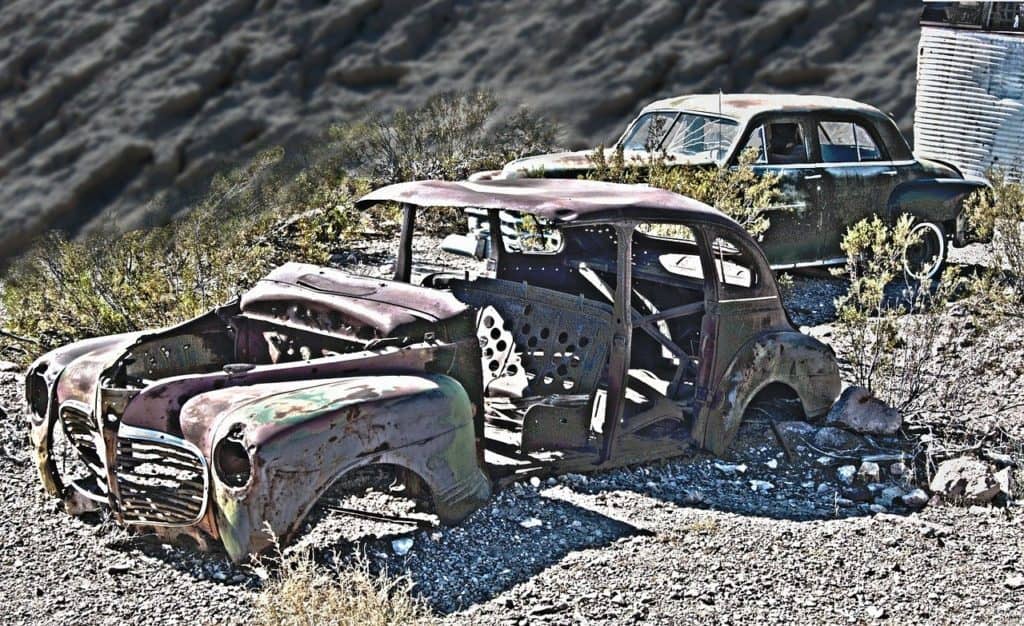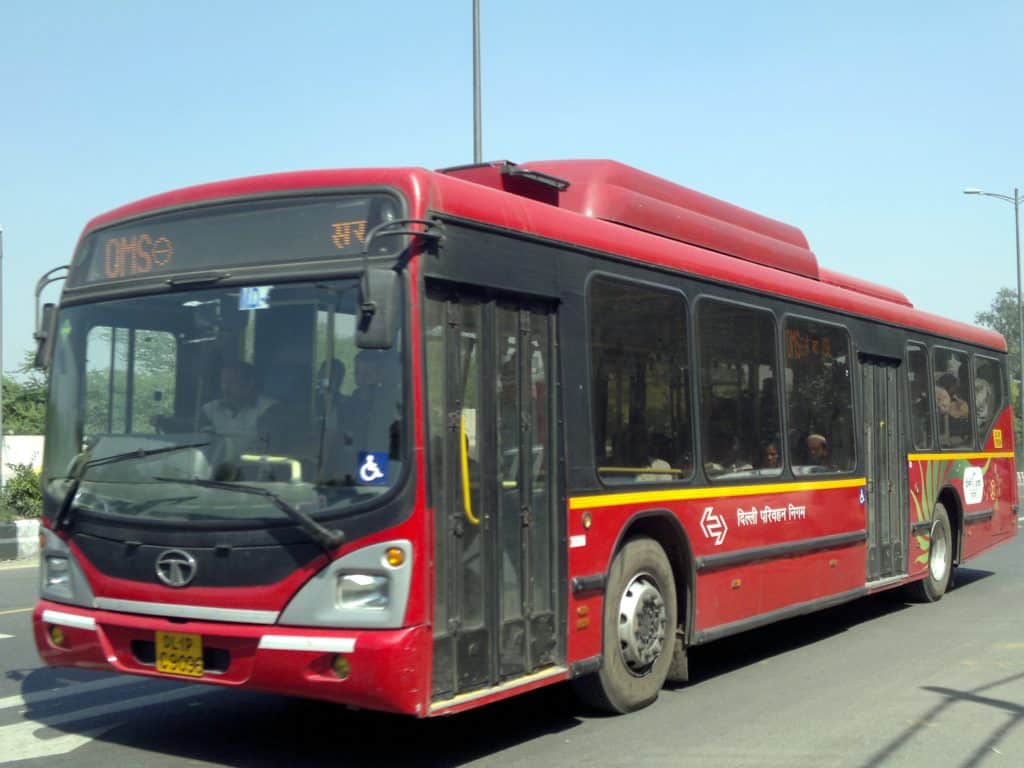Six months after Minister for Road Transport and Highways (MoRTH) Nitin Gadkari introduced the much awaited vehicle scrappage scheme in the Lok Sabha, the Delhi government on September 27th announced its new policy to scrap all 15-year-old diesel vehicles in Delhi and the NCR. “Diesel vehicles older than 15 years will be impounded and sent to the scrapping yard if they are found plying on city roads or parked in public places,” said Delhi Transport Commissioner Ashish Kundra.
The scrappage policy announced by Gadkari is a government-funded programme to get old vehicles off the roads. This is expected to reduce pollution, create job opportunities and boost demand for new vehicles. According to a report prepared by Centre for Science and Environment (CSE), old vehicles are used extensively in India. Accurate quantification of the legacy fleet, however, is a challenge as the vehicle registration database is not updated regularly to identify vehicles due for retirement and scrappage.
The 74-page report titled “What to do with old vehicles? Towards effective scrappage policy and infrastructure,” says that in 2016, a joint study by the Central Pollution Control Board (CPCB) and German agency GIZ (Deutsche Gesellschaft fer Internationale) had estimated that more than 87 lakh vehicles had reached end-of-life (ELV) status in 2015. By 2025, the ELV numbers would be nearly 2.18 crore (two-wheelers account for about 80% of this).
Read more: Privatisation of public transport: The risks ahead
The timeline laid down in the National Scrappage Policy announced on October 1st lays down the following rules for fitness testing and scrapping centres:
- Fitness testing for government and Public Sector Undertaking (PSUs) vehicles would have to be completed by April 1st, 2022.
- Fitness test for heavy commercial vehicles would have to be completed April 1st, 2023.
- Fitness test rules are to be rolled out for other categories by June 1st, 2024.
- Incentives will be announced for scrapping old vehicles and buying new ones.
“The implementation of the scrappage policy will foster a circular economy and help achieve energy security, road safety, better environment and facilitate secondary material usage in the system,” said Prashant K Banerjee, Executive Director, Society of Indian Automobile Manufacturers (SIAM), at a webinar on ‘Vehicle Scrappage Policy 2021: Its Features and Implementation Planning’. SIAM, an umbrella body of auto companies, has suggested that the government provide incentives to car owners who decide to scrap their 15-year-old vehicles.
“The policy has the potential to generate 35,000 jobs, while saving maintenance cost for customers and manufacturing cost for OEMs,” added Amit Varadan, Joint Secretary, Ministry of Road Transport & Highways, one of the key architects of the policy.
“From April 1st, 2023, heavy commercial vehicles will be mandated to undergo test at authorised fitness testing centres,” explained Varadan. “Other commercial vehicles will be mandated to undergo test from August 1st, 2023. We are proposing 70-100 fitness testing centres be set-up all over the country”.
Read more: When should you scrap your old vehicle?
Meanwhile, the CSE report authored by Anumita Roychowdhury and Vivek Chattopadhyaya, Shourabh Gupta, Swagata Dey and Akshat Jain, says that as is evident in Delhi, fixing the age of diesel vehicles has substantially reduced resale value of these vehicles, resulting in more junk being created.
While the drive by the Delhi government’s transport department has picked up pace, it has thrown up other issues. “The problem is in other parts of the country and there is a possibility that vehicles may have been moved out of the capital,” said Vivek Chattopadhyaya.

Centre proposes, Delhi disposes
The Delhi government has currently empanelled eight scrappers which have been put up on the Delhi Transport Department’s website. “We get about 70 to 80 diesel and petrol vehicles daily and also two-wheelers,” said S Arora, Chairman of Pineview Technology, one of the empanelled eight companies. “The money from scrapping will be given to the vehicle owner,” added Kundra.
The department has issued a notice in this regard which further simplifies the terms and conditions of the new scrapping policy. For instance, as per the policy, old vehicles which clear emission and other tests will be able to operate.
Also, the notice makes it clear that not all provisions of the Centre’s policy will be applicable in Delhi-NCR. For instance, the Delhi government’s notice says that diesel vehicles over 10 years old and petrol vehicles over 15 years old, which do not pass the fitness and emission tests, are not allowed on Delhi-NCR roads; they are “liable to be impounded and invite necessary penal action under Motor Vehicles Act, 1988” due to the region’s hazardous levels of air pollution.
According to the 2021 complete guide to get RTO Vehicle Fitness certificate, the roadworthiness certificate or the vehicle fitness certificate for new private vehicles is valid for 15 years and then to be re-registered or renewed every five years thereafter. For commercial vehicles, the vehicle fitness certificate is valid for two years for new vehicles and renewed every year thereafter.
The informal network
The ultimate objective of the scrappage policy, says the CSE report, is to minimise the environmental footprint of junk vehicles and clunkers. This requires maximum recovery of material for reuse, increase in the recovery of recyclable material, and a reduction in the usage of environmentally harmful materials.
This, in turn, requires not only a strong waste recycling and recovery system but also cooperation from manufacturers to ensure that materials that are not environment friendly are not used or minimised and a targetted maximum material recovery is met, adds the report. This requires a regulatory mandate for the automobile industry to reduce usage of heavy metals, plastic, and rubbers. And which when used are marked adequately for recycling.
The report adds that there already exists an extensive countrywide informal network of dealers who collect and dismantle old vehicles to recover material. Nearly all of the automobile scrapyards in India are managed by the informal and semi-formal sector.
A large number of vehicles are scrapped and stripped in informal, unregulated clusters that have also become hubs for scrap metal and all sorts of recovered and refurbished automobile parts. This is common in most big cities.
Chintan, a non-government organization working for the welfare and rights of people engaged in informal recycling, conducted a fact-finding study in 2015 which found that more than 3000 such units operate within Delhi.
Read more: Thousands of abandoned vehicles across city set to go under the hammer
The informal sector primarily consists of traders, dismantlers, scrap dealers and recyclers. The Chintan study points out that this informal sector is highly specialized. For instance, there are traders who deal only in engines or steel rims or tyres. Also, parts sold as scrap have their dedicated markets.
Some of the key challenges that the informal ELV (end-of-life vehicle) market currently faces is space crunch, which poses a significant obstacle in business expansion. This sector also gets limited access to financial and technical assistance.
Formal scrapping facilities with adequate environmental safeguards in the organized sector are still at a nascent stage with very few formal scrapping centres currently operational. The Ministry of Heavy Industries and Public Enterprises (MoHIPE) has formed a Global Automotive Research Centre (GARC) under the National Automotive Testing and R&D Infrastructure Project (NATRiP) as a demonstration centre at Oragadam near Chennai.

Pic courtesy: Wikiwand
CERO-Mahindra MSTC Recycling Pvt. Ltd is another automobile dismantling and recycling unit in Delhi-NCR (Greater Noida). This is a joint venture between Mahindra Accelo and Metal Scrap Trade Corporation Limited, with each party having a 50% stake. Tata and Toyota too are joining the fray.
Environmental safeguards: Skewed responsibility?
These plants will have to follow the scrapping guidelines issued by the Central Pollution Control Board. The guidelines, among other things, specify that the scrap yards should have a minimum area of 1000 square yards and be equipped to remove batteries and liquid gas tanks, to neutralize potential explosive components like air bags, and to remove and separately collect fluids, oils, anti-freeze, coolants, brake fluids, etc.
Further, they should be able to remove catalytic converters and extract noble metals and dispose of non-reusable material without damaging the environment. Currently, the volume of dismantling in these centres low as it is concerned about competition from the informal sector that has lower costs.
In fact, even when government departments want to scrap their vehicles, in their tender process the informal sector has an advantage as they can quote higher prices. For example, in the informal set up, such as in Delhi’s Mayapuri which follow no CPCB guidelines, a vehicle owner can be paid Rs 15,000 for an old Maruti 800. In contrast, CERO will get only Rs 8000 for the same despite having to follow the CPCB guidelines and having to provide a scrapping certificate after which the RTO deregisters the vehicle to prevent misuse and prevent defective parts from being sold.
The DTC story
Ironically, even as the Delhi Government launched its drive to clear the capital’s roads of overaged diesel vehicles, a report surfaced saying the state government run Delhi Transport Corporation’s (DTC) entire fleet of 3760 buses is “overage” and way past their ‘use-by’ date as no procurement of new buses has happened since 2008.
According to one estimate, 99% of DTC buses have surpassed the technical limit for low-floor CNG buses. A bus is deemed as ‘overage’ when it remains in operation for more than eight years. As per Jawaharlal Nehru National Urban Renewal Mission (JNNURM), a low-floor CNG bus can run for a maximum of 12 years or 7.5 lakh km (whichever comes later).
The JNNURM report says that only 32 buses are 8-10 years old while a whopping 3072 buses are 10-12 years old. More than 656 buses plying on Delhi’s roads are older than the maximum operational limit of 12 years. DTC is mandated to maintain a fleet of 5,500 buses but the current strength is just 3760 buses. The Delhi government in 2018 had submitted an affidavit before the Delhi High Court claiming that the city needs a whopping 11,000 buses.
The DTC was last able to approve tender for new buses in 2008. Five new tenders were floated between 2013 and 2019 but none could be finalised due to stringent Annual maintenance contracts (AMCs).
Going by the new rules on diesel vehicles in Delhi, the entire DTC fleet should be scrapped. But the number of scrapped buses has been negligible. Only two buses were scrapped in 2020-2021 and none in the current financial year. About 80 buses were withdrawn between 2019-2020 while 2209 vehicles were withdrawn between 2011-2017.
DTC’s Managing Director Vijay Bhaduri admits the pressing need to add new buses as the expenditure on maintaining old buses is increasing. “Even as we are running overaged buses, we cannot compromise on safety and have to keep the buses in their best possible condition, which is an expensive affair,” said Bhaduri. “The State Transport Authority (STA) has now allowed use of overage buses upto 15 years (almost double of the prescribed operational limit) and has given DTC a 2-3 year window to replace the entire fleet”.
Now, there is a plan to revive the DTC by adding 1,300 new buses in the next seven months. Which is welcome, if it happens, as the DTC carries one million more riders per day than the Delhi metro network.
Meanwhile, the Delhi government on November 5th approved the induction of 190 low-floor CNG propelled air-conditioned buses which would start arriving next year.